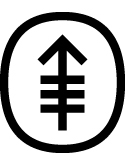Rejection of mouse melanoma elicited by local secretion of interleukin‐2: Implicating macrophages without T cells or natural killer cells in tumor rejection Journal Article
| Authors: | Hara, I.; Nguyen, H.; Takechi, Y.; Gansbacher, B.; Chapman, P. B.; Houghton, A. N. |
| Article Title: | Rejection of mouse melanoma elicited by local secretion of interleukin‐2: Implicating macrophages without T cells or natural killer cells in tumor rejection |
| Abstract: | Tumor cells transduced with cytokine genes provide a model to study host‐effector mechanisms involved in tumor rejection. Local IL‐2 production within a tumor site mimics a specific helper‐T‐cell response, bypassing an immunization phase. Growth of mouse B16F10 melanomas transduced with interleukin‐2 (IL‐2) in syngeneic hosts were significantly delayed. IL‐2‐producing B16F10 cells were super‐transduced with inter‐feron‐γ to up‐regulate expression of major‐histocompatibility‐complex (MHC) antigens. Expression of class‐1‐ or class‐11‐MHC molecules did not augment tumor rejection of IL‐2‐secreting tumor cells. Rejection of IL‐2‐transduced B16F10 cells in syngeneic mice was unaffected by depletion of CD8+ T‐cell and NK1.1+ natural‐killer (NK) cell populations. Tumor rejection occurred in SCID mice even after depletion of NK1.1+ cells, confirming that T cells and NK cells were not required for tumor rejection. Histologic examination of sites of tumor rejection showed inflammation, characterized by infiltrates of macrophages, occasional neutrophils, and areas of necrosis. When mice were treated systemically with macrophage‐colony‐stimulating factor to expand monocyte pools, tumor rejection was significantly augmented further. This study shows that in situ IL‐2 production can result in tumor rejection mediated by inflammatory events, possibly involving macrophages, and mimicking a delayed‐type hypersensitivity (DTH) response even in the absence of T cells and NK cells. Furthermore, tumor rejection can be enhanced by systemic administration of a cytokine to expand potential inflammatory cell populations. © 1995 Wiley‐Liss, Inc. Copyright © 1995 Wiley‐Liss, Inc., A Wiley Company |
| Keywords: | controlled study; nonhuman; t lymphocyte; t-lymphocytes; mouse; animal; mice; cell division; interleukin 2; melanoma; animal experiment; animal model; inflammation; mice, scid; tumor cells, cultured; mice, inbred balb c; mice, inbred c57bl; transduction, genetic; gamma interferon; histocompatibility antigens class i; melanoma, experimental; natural killer cell; killer cells, natural; cd4 lymphocyte count; t-lymphocyte subsets; macrophage; macrophages; histocompatibility antigens class ii; tumor rejection; colony stimulating factor 1; interleukin-2; hypersensitivity, delayed; major histocompatibility antigen; macrophage colony-stimulating factor; priority journal; article; support, non-u.s. gov't; support, u.s. gov't, p.h.s. |
| Journal Title: | International Journal of Cancer |
| Volume: | 61 |
| Issue: | 2 |
| ISSN: | 0020-7136 |
| Publisher: | John Wiley & Sons |
| Date Published: | 1995-04-10 |
| Start Page: | 253 |
| End Page: | 260 |
| Language: | English |
| DOI: | 10.1002/ijc.2910610219 |
| PUBMED: | 7705956 |
| PROVIDER: | scopus |
| DOI/URL: | |
| Notes: | Source: Scopus |
Altmetric
Citation Impact
BMJ Impact Analytics
MSK Authors
-
 13
13Nguyen -
 327
327Chapman -
 364
364Houghton -
 62
62Gansbacher
Related MSK Work


